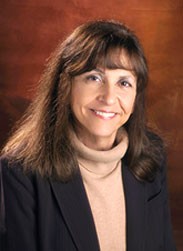
[If you want a serious bio or are downloading one,
click here. Please do not use
the one below.]
Nancy Leveson received all her degrees, in math, management, and computer science, from UCLA (Ph.D. 1980) and spent her formative years being a Computer Science professor at the University of California, Irvine. Moving to Seattle in 1993 in search of rain, she was Boeing Professor of Computer Science and Engineering at the University of Washington. She has now moved to MIT in her continual search for worse weather and new fields to conquer. In the process, she somehow morphed herself into an aerospace engineer and has dual faculty positions in the MIT Dept. of Aeronautics and Astronautics and the Engineering Systems Division.
Professor Leveson started a new area of research, software safety, which is concerned with the problems of building software for real-time systems where failures can result in loss of life or property. One advantage of this topic is that nobody questions its goals, except for a few misanthropes (who don't matter anyway). She and her students produced a formal requirements specification for TCAS II, a real collision-avoidance system required on all commercial aircraft in U.S. airspace. One of the lessons she has learned from this project is never to do anything like it again. The FAA was pleased with it though and adopted it as their official specification. She and her students are now analyzing safety in NextGen (the planned upgrades to the air transportation system). She claims that you should not read anything into the fact that she has been taking the train a lot lately. Our TCAS model is still being used to specify and evaluate potential upgrades to TCAS. Using this preliminary work, we have defined a complete system engineering environment for software-intensive systems that is based on model-driven development and a concept called Intent Specifications. A commercial set of tools was released to the unsuspecting world in June 2003. Most recently, she has been applying these tools to space projects (as if NASA does not have enough problems right now).
Different industries have traditionally used very different approaches to safety engineering. See White Paper on Approaches to Safety Engineering for an overview. Our technology is changing rapidly, however, and these approaches are quickly becoming ineffective. The System Safety Research Lab is creating new approaches to system safety that handle increased levels of complexity and new technology. Our techniques are based on a new system-theoretic model of accidents (STAMP) that replaces the traditional chain-of-events model underlying most current accident investigation, prevention, and assessment procedures. The model includes software, organizations, management, human decision-making, and migration of systems over time to states of heightened risk. Several theses and dissertations as well as my new book that appeared in January 2012 demonstrate the application of the new tools to a variety of engineered systems. Looking for new worlds to conquer, we have been experimenting with the use of STAMP in non-engineering applications such as hospital safety, pharmaceutical safety, food safety, corporate fraud, and (as if we were not already in enough trouble) the financial crisis. My new textbook, an Introduction to System Safety Engineering (MIT Press), covers everything you need to know about designing for safety. All of my books have been translated into Japanese and Chinese. I can't vouch for their accuracy, of course, but they seem to be much longer in these languages.
Professor Leveson has been Editor-in-Chief of IEEE Transactions on Software Engineering, an elected member of the Board of Directors of the International Council on Systems Engineering (INCOSE), an elected member of the Board of Directors of the Computing Research, a member of the National Research Council Advisory Committee to the Division on Engineering and Physical systems, a member of the ACM Committee on Computers and Public Policy, a consultant to the NASA Aerospace Safety Advisory Panel (ASAP), and served on a ridiculous number of blue ribbon and report writing committees. She is currently resting from all this frenetic activity, teaching, and writing yet more books.
Dr. Leveson is a Fellow of the ACM and was awarded the 1995 AIAA Information Systems Award for contributions in space and aeronautics computer technology and science for "developing the field of software safety and for promoting responsible software and system engineering practices where life and property are at stake." She was awarded the ACM 1999 Allen Newell Award for research contributions to computer science and the 2004 ACM Sigsoft Award for Outstanding Software Research. In 2000, she was elected to the National Academy of Engineering (NAE).
Two popular papers you might find interesting and fun to read:
You may also like to argue with me about the future of software engineering Software Engineering: A Look Back and a Path to the Future (html) , which was invited for the 50th Anniversity issue of the CACM (February 1997).
Women in computer science papers: